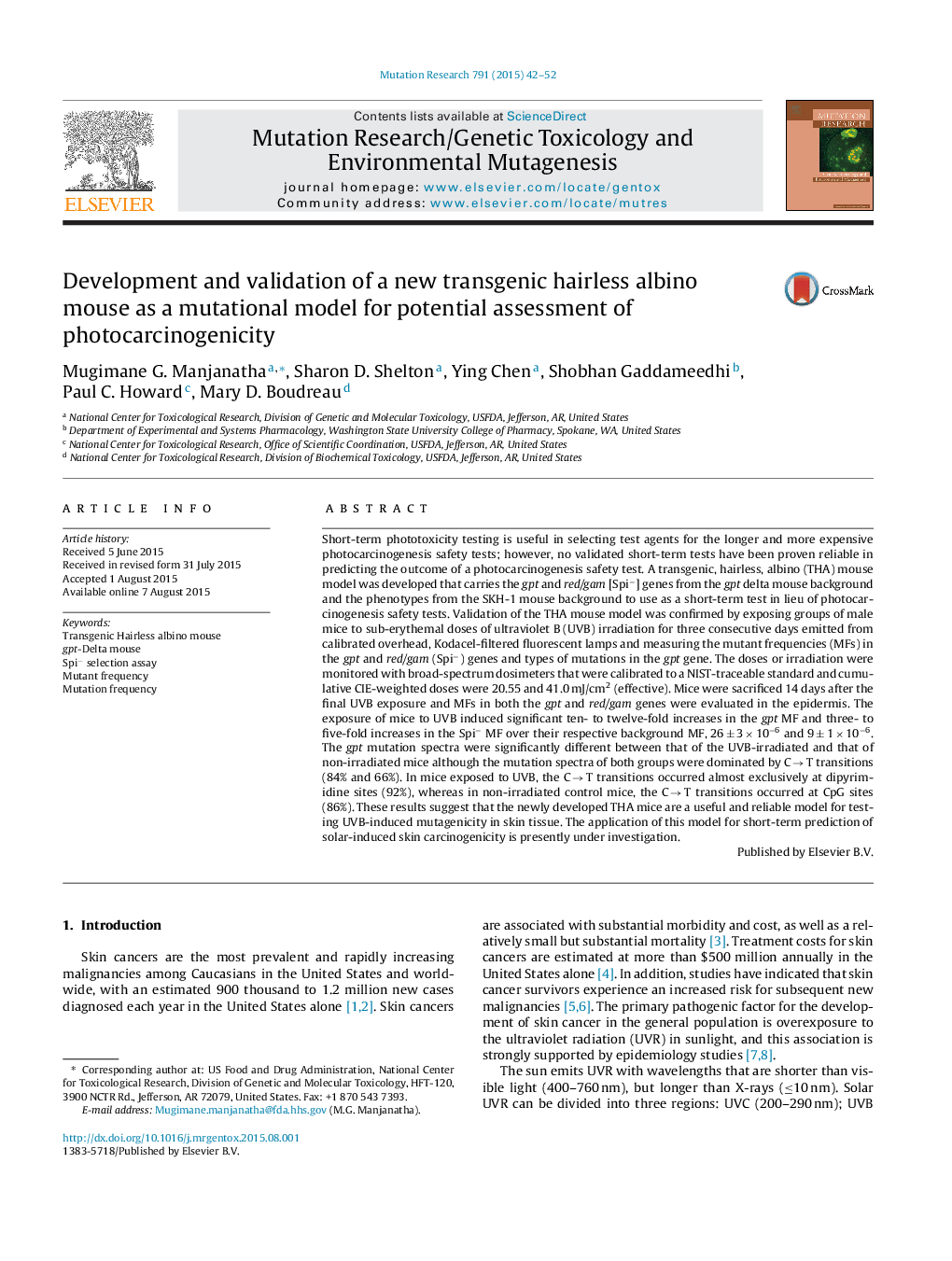| کد مقاله | کد نشریه | سال انتشار | مقاله انگلیسی | نسخه تمام متن |
|---|---|---|---|---|
| 8456341 | 1548576 | 2015 | 11 صفحه PDF | دانلود رایگان |
عنوان انگلیسی مقاله ISI
Development and validation of a new transgenic hairless albino mouse as a mutational model for potential assessment of photocarcinogenicity
ترجمه فارسی عنوان
توسعه و اعتبارسنجی موش آلبینیو بدون موی به عنوان یک مدل جهش یافته برای ارزیابی بالقوه فوتوکارسینژنتیک
دانلود مقاله + سفارش ترجمه
دانلود مقاله ISI انگلیسی
رایگان برای ایرانیان
موضوعات مرتبط
علوم زیستی و بیوفناوری
بیوشیمی، ژنتیک و زیست شناسی مولکولی
تحقیقات سرطان
چکیده انگلیسی
Short-term phototoxicity testing is useful in selecting test agents for the longer and more expensive photocarcinogenesis safety tests; however, no validated short-term tests have been proven reliable in predicting the outcome of a photocarcinogenesis safety test. A transgenic, hairless, albino (THA) mouse model was developed that carries the gpt and red/gam [Spiâ] genes from the gpt delta mouse background and the phenotypes from the SKH-1 mouse background to use as a short-term test in lieu of photocarcinogenesis safety tests. Validation of the THA mouse model was confirmed by exposing groups of male mice to sub-erythemal doses of ultraviolet B (UVB) irradiation for three consecutive days emitted from calibrated overhead, Kodacel-filtered fluorescent lamps and measuring the mutant frequencies (MFs) in the gpt and red/gam (Spiâ) genes and types of mutations in the gpt gene. The doses or irradiation were monitored with broad-spectrum dosimeters that were calibrated to a NIST-traceable standard and cumulative CIE-weighted doses were 20.55 and 41.0 mJ/cm2 (effective). Mice were sacrificed 14 days after the final UVB exposure and MFs in both the gpt and red/gam genes were evaluated in the epidermis. The exposure of mice to UVB induced significant ten- to twelve-fold increases in the gpt MF and three- to five-fold increases in the Spiâ MF over their respective background MF, 26 ± 3 Ã 10â6 and 9 ± 1 Ã 10â6. The gpt mutation spectra were significantly different between that of the UVB-irradiated and that of non-irradiated mice although the mutation spectra of both groups were dominated by C â T transitions (84% and 66%). In mice exposed to UVB, the C â T transitions occurred almost exclusively at dipyrimidine sites (92%), whereas in non-irradiated control mice, the C â T transitions occurred at CpG sites (86%). These results suggest that the newly developed THA mice are a useful and reliable model for testing UVB-induced mutagenicity in skin tissue. The application of this model for short-term prediction of solar-induced skin carcinogenicity is presently under investigation.
ناشر
Database: Elsevier - ScienceDirect (ساینس دایرکت)
Journal: Mutation Research/Genetic Toxicology and Environmental Mutagenesis - Volume 791, September 2015, Pages 42-52
Journal: Mutation Research/Genetic Toxicology and Environmental Mutagenesis - Volume 791, September 2015, Pages 42-52
نویسندگان
Mugimane G. Manjanatha, Sharon D. Shelton, Ying Chen, Shobhan Gaddameedhi, Paul C. Howard, Mary D. Boudreau,
